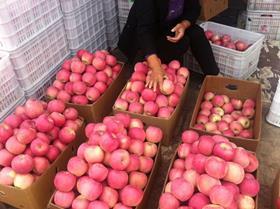
Chile is gaining ground on the US in Taiwan’s lucrative apple import trade,according to a new GAIN report form the USDA's Foreign Agricultural Service.
With domestic production in the Asian nation negligible, the US retained its mantle as Taiwan’s leading source of apples over MY2016/17 (year ending 30 June 2017), exporting 59,939 tonnes, commanding a 36 per cent market share. Over 90 per cent of the export crop came from Washington State, with Taiwan emerging as the US industry’s third largest export market by volume.
Chile was the second largest supplier over MY2016/17, sending 51,445 tonnes, up from 42,621 tonnes in MY2015/16. Consequently, Chile’s market share leapt from 26 per cent in MY15/16 to 31 per cent in MY16/17, with the GAIN report attributing this to: “price competitiveness and increasing familiarity among importers on how to handle Chilean fruit imports.”
Japanese shipment volumes declined 27 per cent from MY2015/16 to MY2016/17, after concerns were raised about radiation contamination from the Fukushima disaster. Japan’s market share (12 per cent) was behind that of New Zealand (14.6 per cent) but ahead of South Africa (6 per cent). China remains locked out of the Taiwanese market due to phytosanitary concerns.
“Given the fact that every supplying country has ambitious marketing promotional plans and budgets to attract more consumers, changes in market share will continue to shift year-to-year mainly based on supplier prices, product quality, and availability,” the GAIN report claimed.
In terms of varietal preference, Fuji continues to dominate the trade, accounting for over 85 per cent of the total apple imports.
Chile, New Zealand and the US have had moderate success exporting other apple varieties in recent years, including Aurora, Gala, Pink Lady and Ambrosia, while Japan appears to be developing a market for niche varieties, such as Toki, with consumers willing to pay a premium for the fruit.
Consistent year-round supply keeps Taiwanese consumers in the habit of eating apples on a regular basis, with retail sales rising steadily in MY2016/17, though only moderate growth in volume is expected in the coming years.
“Fierce price competition among supplier countries is expected to drive prices down,” the GAIN report explained. “The only exception is in the gift-giving sector, where Japan dominates, and the selling prices remain high.
“For general apple consumption, consumers are price sensitive, so to maintain or increase US market share, continuous promotional activities are needed to reinforce consumer’s familiarity with US apples and nutritional values.”



